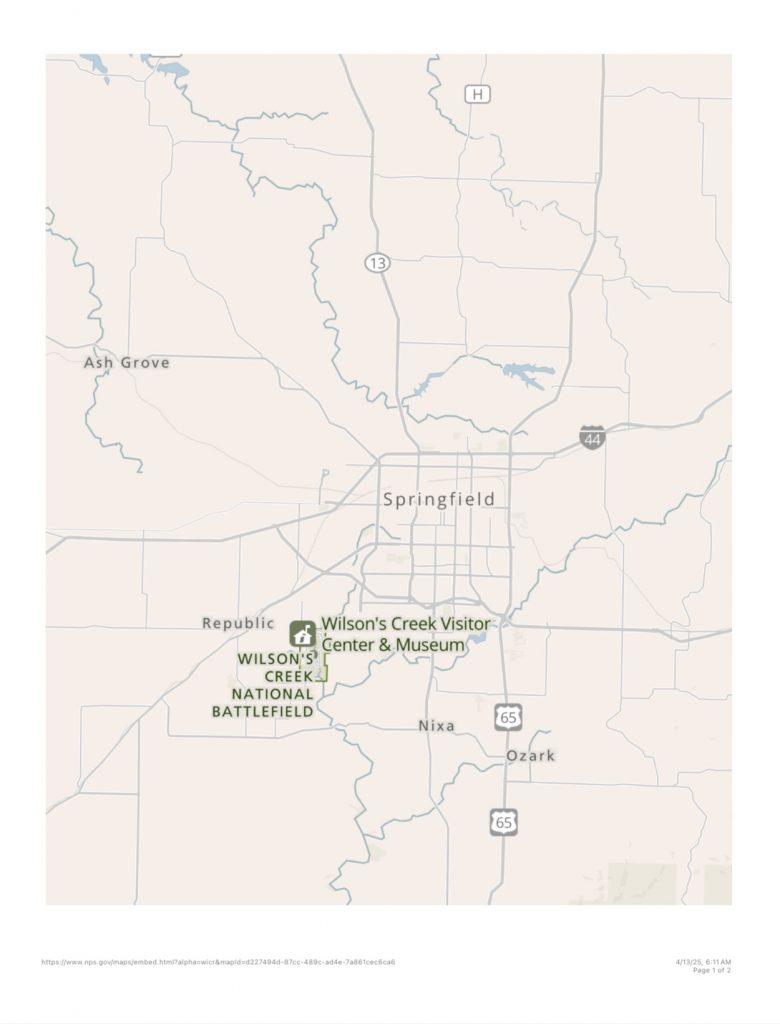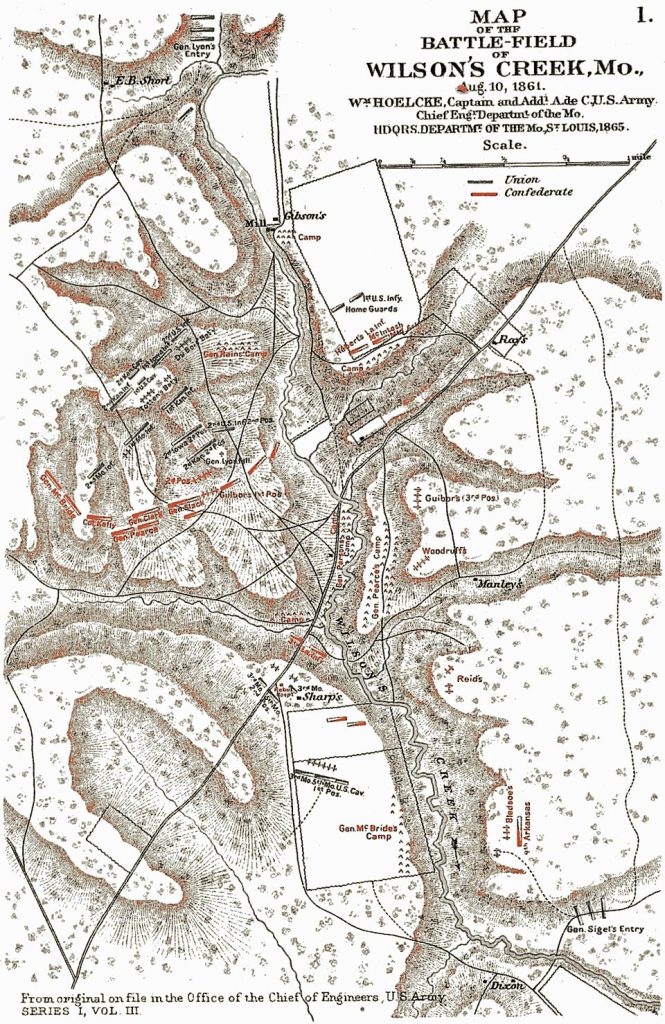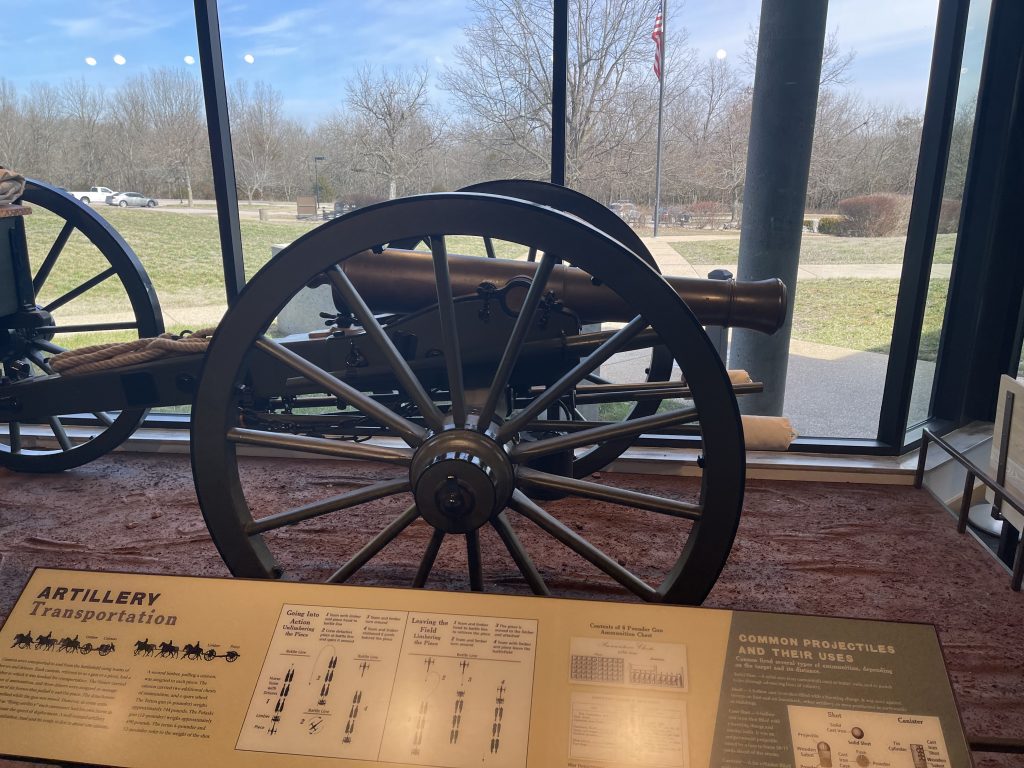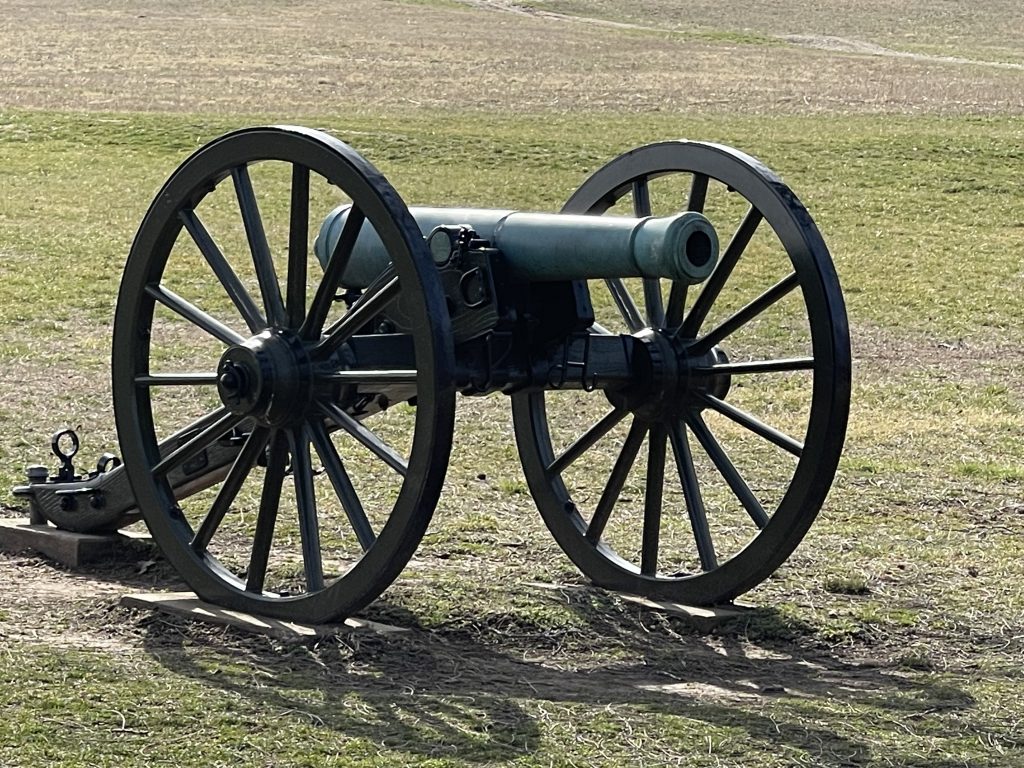Echoes of Missouri’s Civil War
“One cannot and must not try to erase the past
merely because it does not fit the present.”
– Golda Meir
This quote speaks to the necessity of acknowledging history in its entirety—the good, the bad, the ugly, and the uncomfortable—so that we can learn from it rather than repeat its mistakes.
Introduction: Stepping Into History
There’s something about standing on a battlefield that makes history feel less like words on a page and more like a pulse beneath your feet. Wilson’s Creek National Battlefield, just southwest of Springfield, Missouri, is one of those places—where the weight of the past is undeniable, and every step across its fields carries the echoes of courage, sacrifice, and divided loyalties.
I remember the first time I visited Wilson’s Creek. As I drove the loop through the battlefield, I felt a quiet solemnity settle over me. The trees, the rolling hills, and the stillness of the fields stood in stark contrast to the chaos that erupted here on August 10, 1861, when soldiers fought, fell, and forever changed the course of history.
Whether you come to learn, reflect, or simply stand in a place where history was written, Wilson’s Creek offers an experience that stays with you.
How to Get There
Driving Directions from Interstate 44:
– Head south on Highway 65 for about 6 miles.
– Take the exit for James River Freeway (Highway 60) and drive west.
– Continue along Highway 60 for approximately 4 miles.
– Exit onto Farm Road 182/Wilson’s Creek Boulevard, then turn left (south).
– Follow Farm Road 182 for 2 miles, arriving at the battlefield entrance.
The drive takes roughly 20 minutes from the Interstate 44 and Highway 65 interchange in Springfield MO, making Wilson’s Creek an easy and meaningful day trip.

The Battle of Wilson’s Creek: Missouri’s Divided Loyalties
A Border State in Crisis
Missouri’s place in the Civil War was complex and deeply personal. As a border state, its population was split—some pledged allegiance to the Union, others fought for the Confederacy, and many simply wanted to survive without choosing a side.
The battle itself reflected this fractured identity. Union Brig. Gen. Nathaniel Lyon, determined to keep Missouri under Union control, launched a bold surprise attack against the Confederate forces led by Brig. Gen. Ben McCulloch and Maj. Gen. Sterling Price.
The Fight for Wilson’s Creek
Union forces pushed forward, hoping to catch the Confederates off guard. But the battle did not unfold as planned. Communication broke down, Lyon’s troops became isolated, and Confederate counterattacks on Bloody Hill turned into fierce, relentless waves.
Standing atop Bloody Hill, I imagined those moments—the smoke rising, the cannon fire cracking through the air, the shouts of men battling for survival. It’s one thing to read about a battlefield, but standing where history happened is something entirely different.
Lyon fell in battle, becoming the first Union general to die in the war, and the Union forces, exhausted and outnumbered, retreated to Springfield.
Though the Confederates claimed victory, they could not hold Missouri for long. Guerrilla warfare erupted across the state, and battles continued, shaping Missouri’s wartime experience for years to come.

Walking Through History: Exploring Wilson’s Creek Today
Must-See Sites Along the Tour Loop
The 4.9-mile driving loop takes you through eight key battlefield locations, each telling a piece of the story:
- Bloody Hill – The heart of battle, where Union forces made their last stand.
- Ray House – Used as a Confederate field hospital, still standing today.
- Sinkhole Burial Site – The final resting place for fallen Union soldiers.
- Gibson’s Mill Site – A strategic location before the battle.
- Sigel’s Position – Where Union forces made their retreat.
- Pulaski Arkansas Battery & Guibor’s Battery – Confederate artillery positions.

Standing in the Footsteps of History
Walking the trails at Bloody Hill was surreal. As I stood beside an old cannon, looking down the slope where soldiers once charged into gunfire, I thought of their fear, their determination, their sacrifice.
At the sinkhole burial site, the history felt almost too quiet—as if the ground itself was honoring those who died here. Some places carry a heaviness, and Wilson’s Creek is one of them.
Lessons from Wilson’s Creek: Connecting Past and Present
Divided Loyalties – Then and Now
Wilson’s Creek teaches a lesson that still resonates today—the reality of a divided nation. Missouri’s struggle in 1861 was deeply personal, splitting families and communities.
Today, division still exists—not in battlefields but in politics, society, and personal beliefs. But history reminds us that even in chaos, people adapt and rebuild. The Civil War was fought in part because compromise failed. That lesson should stay with us as we navigate our own challenges.
Conclusion: Why Wilson’s Creek Matters
Wilson’s Creek: Where the Past Still Speaks
There are bigger, more famous battlefields in America—but Wilson’s Creek holds something special. It’s not just about troop movements and strategies. It’s about the people who fought here, the choices they made, and the impact that still lingers in Missouri today.
Step into History: Experience the Legacy of Bloody Hill
Go. Walk the trails. Stand on Bloody Hill. Let history speak to you through the landscape, through the silence, through the markers honoring those who fought and fell.
Help preserve this sacred ground for future generations. Consider supporting the ongoing preservation efforts—every contribution ensures the stories of those who came before us are never forgotten.
Learn more and donate here:
National Park Service: Wilson’s Creek Donation Page
https://www.nps.gov/wicr/getinvolved/donate.htm
Wilson’s Creek National Battlefield Foundation
Echoes of History: Lessons from Wilson’s Creek
History is not just about remembering battles—it’s about learning from them. Wilson’s Creek shows us that division has consequences, courage has a cost, and the past is never truly gone.
Other Civil War Battlefields Worth Exploring
- Battle of Lexington (Missouri) – The site of the 1861 Battle of the Hemp Bales, showcasing Missouri’s wartime ingenuity.
- Battle of Westport (Missouri) – Known as the “Gettysburg of the West,” a major Union victory in 1864.
- Fort Davidson (Missouri) – Site of the Battle of Pilot Knob, where Union forces fought a fierce defensive stand.
- Pea Ridge Battlefield (Arkansas) – One of the most decisive battles in the Western Theater, securing Missouri for the Union.
Closing Thoughts
Wilson’s Creek isn’t just history—it’s a reflection of who we are today.
Standing in the place where soldiers once fought and fell, I couldn’t help but think about the choices they made and the impact that followed. As we navigate our own struggles, we’d do well to remember their stories, their courage, and the lessons they left behind.
Ten Interesting Facts About Wilson’s Creek
- First Major Battle West of the Mississippi – Fought on August 10, 1861, Wilson’s Creek was the first large-scale Civil War battle in the western theater. It set the stage for Missouri’s turbulent role in the war.
- Union General Nathaniel Lyon – Wilson’s Creek saw the death of Brig. Gen. Nathaniel Lyon, the first Union general killed in the Civil War. His aggressive tactics shaped Missouri’s early war efforts.
- General Lyon’s Marker & Burial Site – Though Lyon fell in battle at Wilson’s Creek, he is buried in Phoenixville Cemetery, Eastford, Connecticut. A battlefield marker honors his legacy, ensuring visitors remember his sacrifice.
- Bloody Hill’s Legacy – This infamous battlefield section saw relentless Confederate counterattacks as Union forces held their ground before being forced to retreat.
- Confederate Victory’s Ripple Effect – Though the Confederates claimed victory, they failed to fully secure Missouri, leaving the state divided and embroiled in ongoing conflict.
- Ray House: A Silent Witness – Built in 1852, the Ray House served as a Confederate field hospital, witnessing the immediate aftermath of battle. Visitors can still see this historic site today.
- Touring the Battlefield – The 4.9-mile tour loop allows visitors to explore eight historical stops, alongside seven miles of walking and horseback trails.
- Visitor Center Experience – The battlefield’s museum and exhibits showcase artifacts, firsthand accounts, and educational programs that bring the events of August 10, 1861, to life.
- Living History Reenactments – Held annually, these reenactments recreate the battle’s atmosphere, with participants in authentic Civil War uniforms, musket fire demonstrations, and guided historical tours.
- Preservation Milestone – In 1960, Wilson’s Creek became part of the National Park Service and was later listed on the National Register of Historic Places, securing its protection for future generations.







Leave a Reply